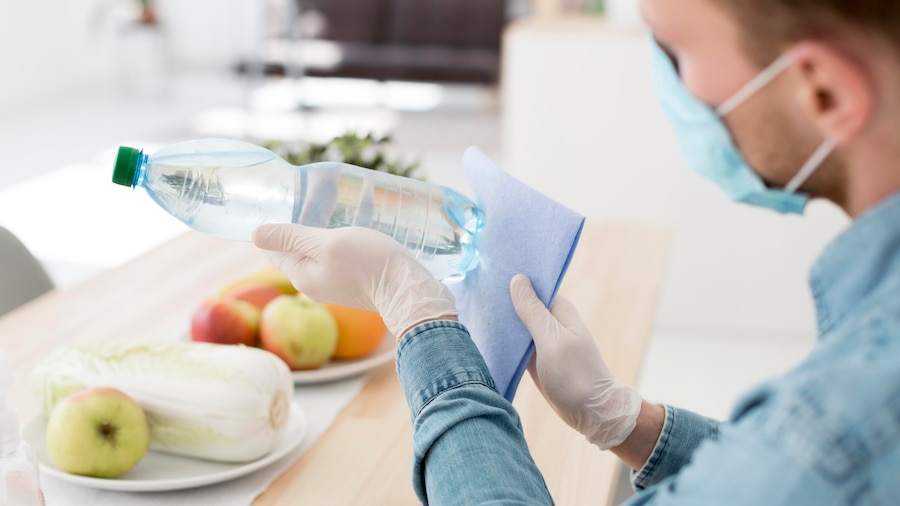General
What Strategies To Maintain to Keep Food Safe
by Author
-
Sunday, November 19, 2023
153 Views
Do you have an approach for keeping the food in your kitchen safe? According to the Centers for Disease Control and Prevention (CDC), 1 in 6 Americans yearly suffers from foodborne illnesses caused by dangerous pathogens, including E. coli and Salmonella. With these alarming statistics, it’s more critical than ever to ensure that we take the necessary measures to keep our food safe from contamination and spoilage.
In this blog post, we cover strategies such as proper storage practices, hygiene tips and disinfecting methods so that you can stay informed on how you can protect yourself when preparing meals at home or eating out. Read on to learn what steps must be taken to maintain healthy consumption habits!
Wash Your Hands Before Handling Food:
Always wash your hands with soap and warm water for at least 20 seconds before handling food, using the restroom, or touching animals.
As the adage goes, cleanliness is next to godliness, especially regarding food preparation. Washing your hands with soap and warm water for at least 20 seconds before handling food is crucial in preventing the spread of bacteria and other harmful organisms. It’s not just about maintaining personal hygiene – it’s about keeping the people eating your food safe and healthy.
Whether you’re cooking for yourself or a group of people, it’s vital to ensure your hands are always clean before getting started. If you want to take your food safety techniques to the next level, consider enrolling in a Food Safety Strategies course for Home and Out to learn even more best practices for keeping your kitchen and food as safe as possible.
Separate Raw Foods from Ready-to-Eat Foods:
This will help prevent cross-contamination and the spread of germs.
In any kitchen, safety and cleanliness should be a top priority. A critical step in maintaining a clean and safe environment is separating raw foods from ready-to-eat foods. This simple practice can prevent cross-contamination and the spread of harmful germs.
Raw meats, for example, can contain harmful bacteria that can cause illness if they come into contact with other foods. By keeping natural foods separate, you can ensure that any potential hazards are contained and do not affect other items in your kitchen. Implementing this practice is easy and can help ensure the health and safety of everyone who enjoys your delicious meals.

Cook Foods to Proper Temperatures:
Use a food thermometer to make sure foods are cooked thoroughly and reach a safe internal temperature (beef, pork, lamb & veal steaks, chops, and roasts should get 145° F; ground beef & pork should reach 160° F; poultry should go 165° F).
Cooking food to the proper temperatures is crucial to destroy harmful bacteria and other microorganisms, making it safe for consumption. A food thermometer is an excellent tool for accurately measuring your food’s temperature. When cooking meats such as beef, pork, lamb, and veal steaks, chops, and roasts, it is essential to ensure they reach an internal temperature of 145°F.
Ground beef and pork require a higher interior temperature of 160°F to prevent food poisoning. Poultry should be cooked to an internal temperature of 165°F to eliminate the risk of Salmonella and other foodborne illnesses. By using a food thermometer, you can guarantee that your meals are safe and delicious.
Avoid Cross-Contamination:
Use separate cutting boards for raw meats and vegetables when preparing meals to reduce the risk of bacteria spreading from one food item to another.
When it comes to cooking, safety should always be a top priority. One way to minimise the risk of harmful bacteria spreading from one food item to another is to use separate cutting boards for raw meats and vegetables. While it may seem like an extra step, it’s a simple and effective way to protect yourself and your loved ones from foodborne illness. By keeping your cutting boards designated for specific foods, you can ensure no cross-contamination during meal preparation. So, next time you’re in the kitchen, take a moment to grab an extra cutting board and keep your kitchen and your family safe.

Conclusion
To ensure your food is safe, following these steps is incredibly important. You don’t want to risk food poisoning in your household, and following these steps will help to avoid that. Change your habits today by remembering to wash your hands, separate raw foods from ready-to-eat foods, cook to the correct temperature, refrigerate perishable foods promptly, defrost food safely, and avoid cross-contamination. Now that you know the basics for keeping your food safe from being contaminated with harmful germs or bacteria, it’s time to put them into practice! Don’t wait – start implementing food safety protocols in your kitchen today.
![male-workers-working-cold-drink-factory_107420-96512[1]](https://yourstorieshub.com/wp-content/uploads/2023/11/male-workers-working-cold-drink-factory_107420-965121.jpg)






